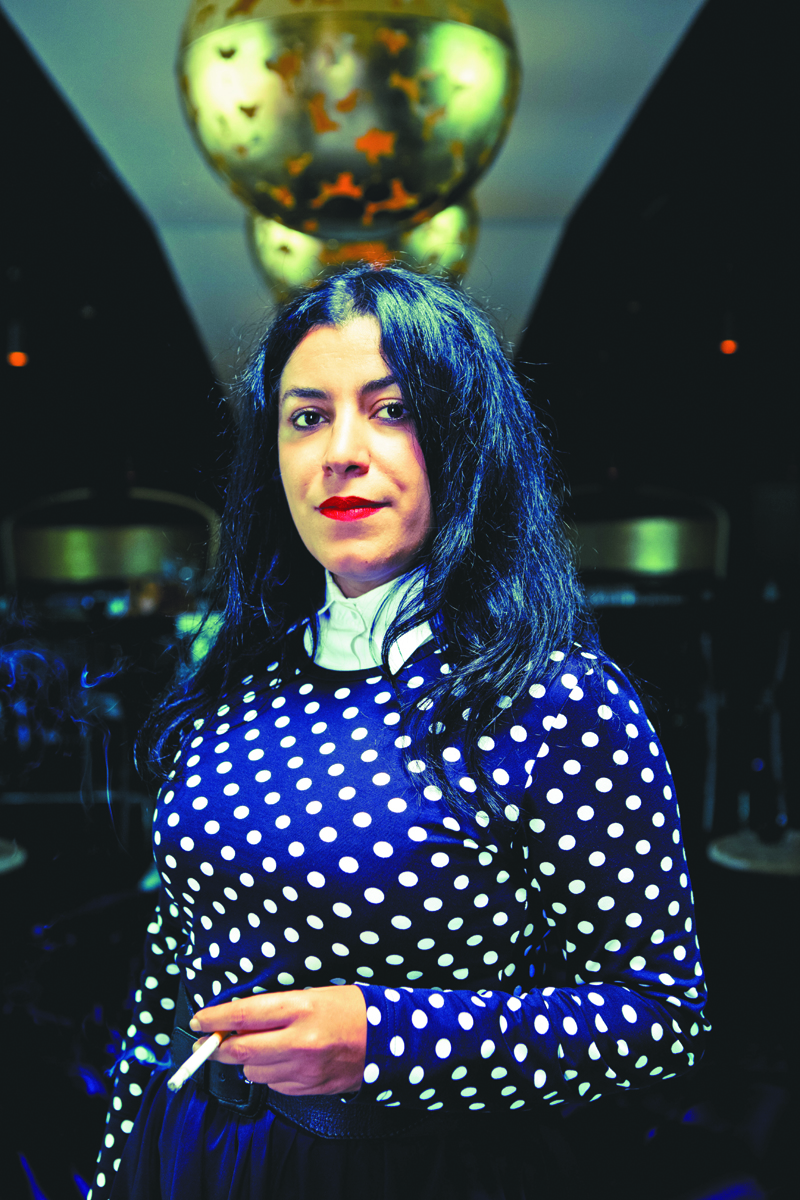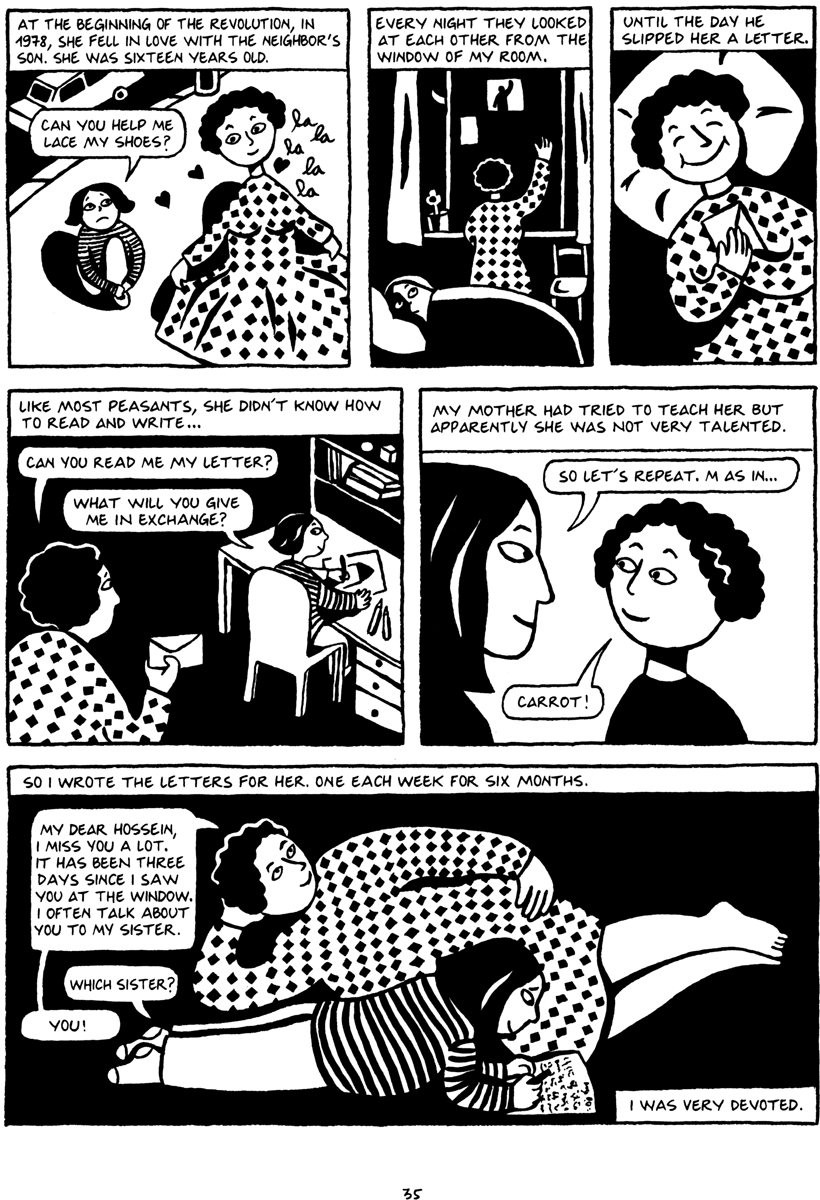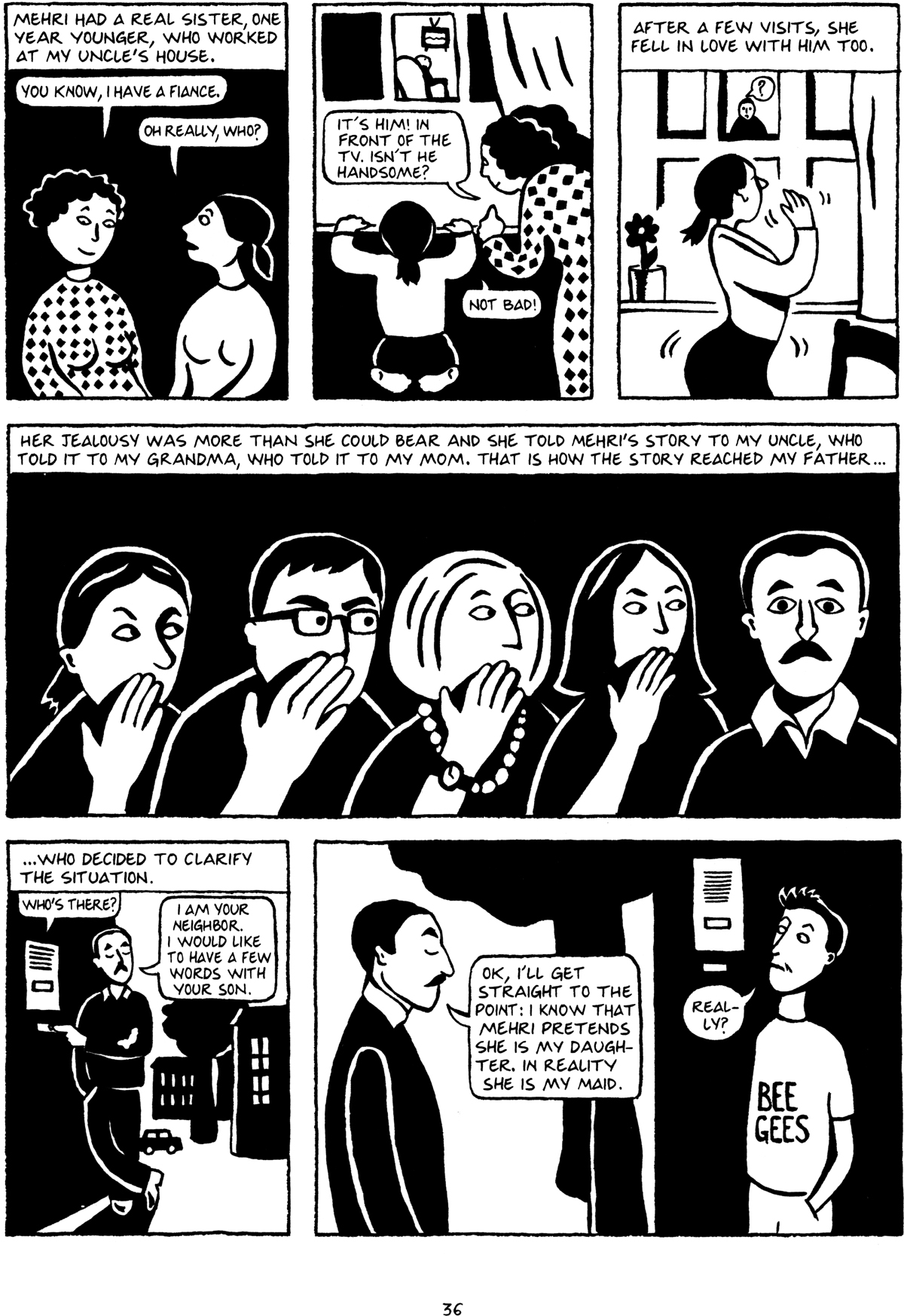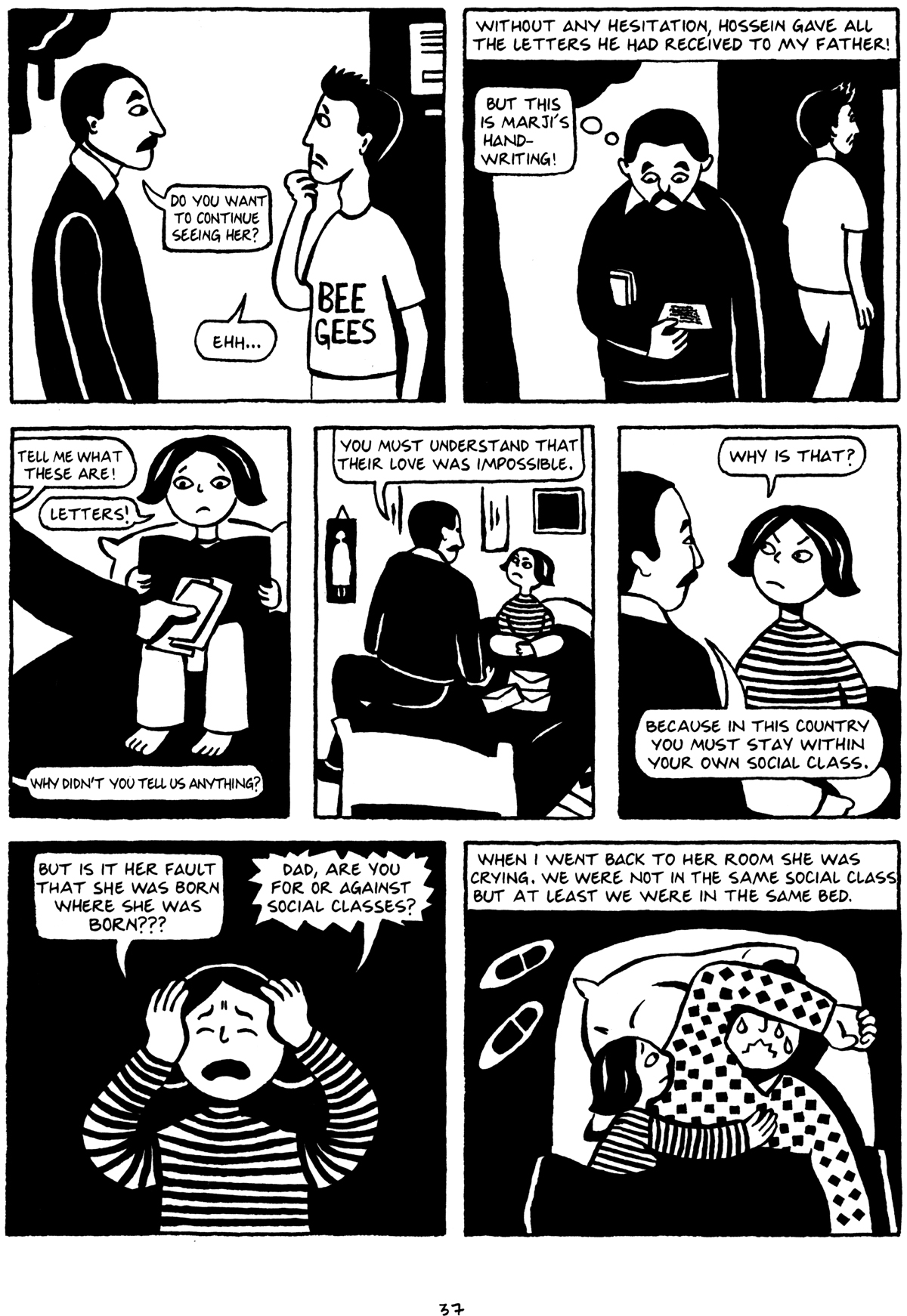1.10
from Persepolis
Marjane Satrapi

KEY CONTEXT This excerpt is from Persepolis, an autobiography in the form of a graphic novel. Persepolis depicts Satrapi’s early years growing up in Iran, just before and immediately after the Iranian Revolution of 1979. The revolution ousted the United States–
Focus for Your Observation
Consider the differences between social classes in Iran.
21




Questions for Analysis
Observe: What are the differences that Satrapi identifies between the social classes?
Identify patterns: How are the maid, Mehri, and the narrator, Marji, similar? How are they different?
conclusions: What is the author, Marjane Satrapi, suggesting about the nature of Iranian social classes in this excerpt? How does she demonstrate this point in the drawings and the text?